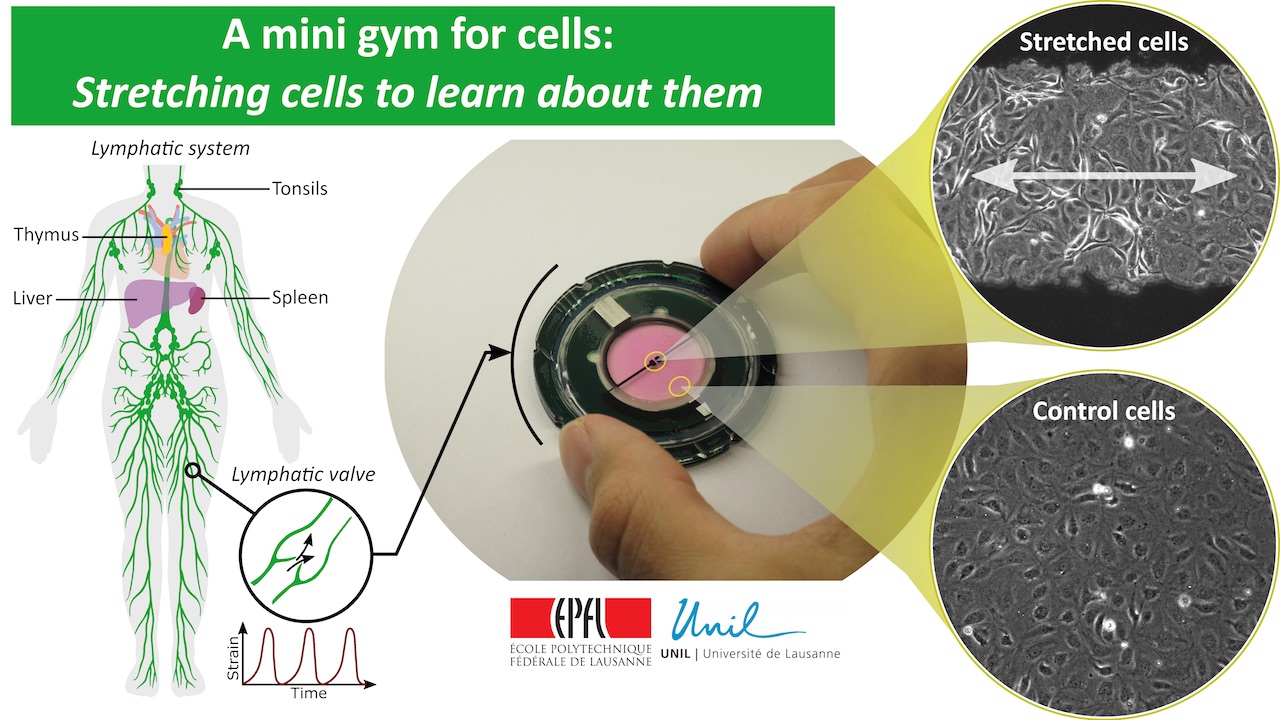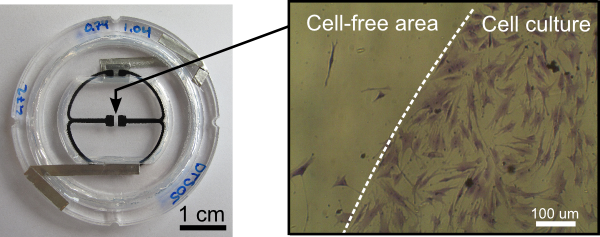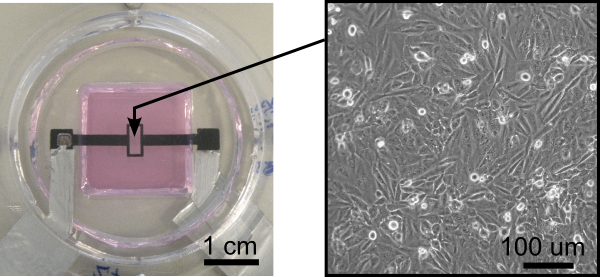Motivation
- Biocompatible soft uniaxial actuator
- Generate tensile or compressive stress (up to 35%)
- Compatible with high resolution optical microscopy
- Compatible with biological cell culture protocol
(alcohol sterilization, growth medium immersion, high humidity and temperature) - Provides long (>24 hours) and stable operation

Periodic stretching of small cell population
A single DEA-actuator was developped for periodic stretching of small cell population (mm2). Non-equibiaxial pre-stretch of the membrane is used to generate uniaxial actuation strain (see video below). The device can generate up to 35% uniaxial tensile stretch and covers biologically relevant actuation frequencies (0-5 Hz).
Biological cells are cultured on top of the soft actuator. A patterning protocol was developped to ensure that cells are only attaching and proliferating in the gap located between the two stretchable electrodes (electrodes appear in black on the pictures below). Thanks to the membrane transparency, optical microscopy can be used for real time monitoring of the biological sample.

Periodic compression of small cell populations
A single DEA-actuator was developed for periodic compression of small cell population (mm2). Non-equibiaxial pre-stretch of the membrane is used to generate uniaxial compressive strain (see video below). The device can induce up to 10% uniaxial compressive stretch and covers the biologically relevant actuation frequencies (0-5 Hz).
Biological cells are cultured on top of the soft actuator. A patterning procotol was developped to ensure that cells are only attaching and proliferating in the gap located between the two stretchable electrodes (electrodes appear in black on the pictures below). Thanks to the membrane transparency, optical optical microscopy can be used for real time monitoring of the biological sample.

Main publications on our cell-stretching devices
Imboden et al, “High-speed mechano-active multielectrode array for investigating rapid stretch effects on cardiac tissue”, Nature Communications 2019
A. Poulin; M. Imboden; F. Sorba; S. Grazioli; C. Martin-Olmos et al. : An ultra-fast mechanically active cell culture substrate; Scientific Reports. 2018-07-02. DOI : 10.1038/s41598-018-27915-y.
A. Poulin; C. Saygili Demir; S. Rosset; T. Petrova; H. Shea : Dielectric Elastomer Actuator for Mechanical Loading of 2D Cell Cultures; Lab on a Chip. 2016. DOI : 10.1039/C6LC00903D.